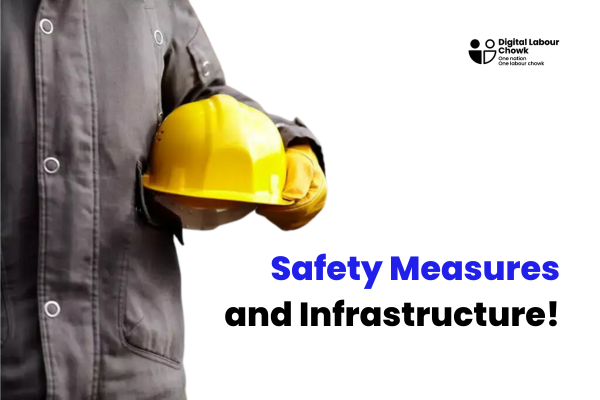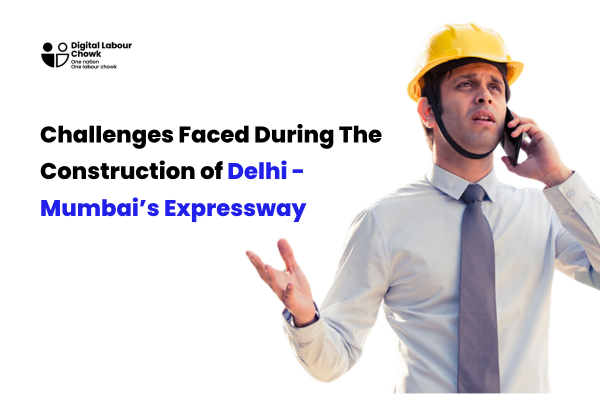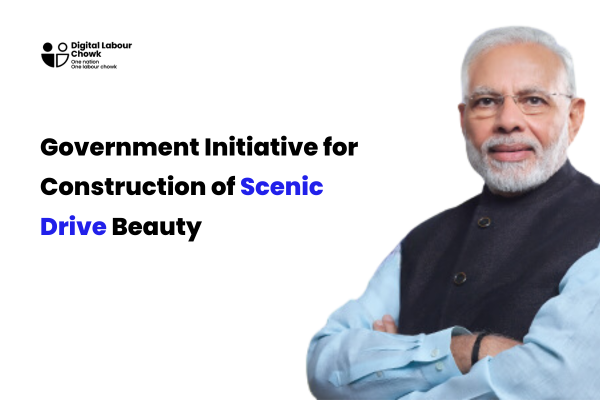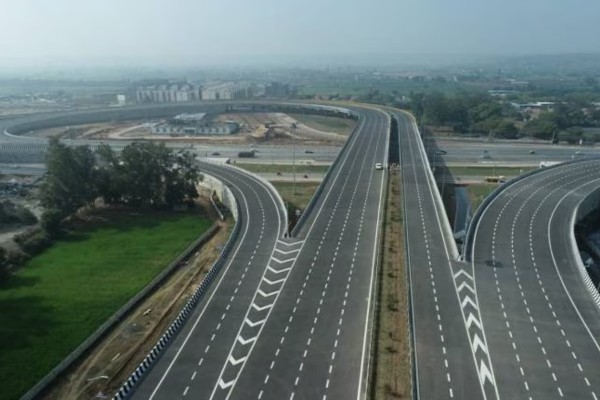Physical Address
Introduction to the Delhi Mumbai Expressway

The Delhi Mumbai Expressway, a testament to India’s commitment to modern infrastructure, aims to connect the political hub, Delhi, with the financial epicenter, Mumbai, through an extensive six-lane expressway system. This ambitious project is set to redefine the country’s transportation landscape and catalyze economic growth across regions.
For the Delhi Mumbai’s Route Knowledge Please Visit: https://www.timesnownews.com/delhi/delhi-mumbai-expressway-route-map-and-sections-all-you-need-to-know-article-107905197
Importance of the Delhi Mumbai Expressway
The Delhi-Mumbai Expressway holds immense importance as a transformative infrastructure project connecting two major economic hubs of India. Spanning approximately 1,250 kilometers, it promises to significantly reduce travel time between Delhi and Mumbai, boosting trade, commerce, and connectivity along its route. As a flagship initiative under the Bharatmala Pariyojana, it aims to enhance logistical efficiency, facilitate smoother movement of goods and people, and spur regional development. Additionally, the expressway is expected to generate employment opportunities, attract investments in ancillary industries, and stimulate economic growth across the states it traverses, contributing to India’s overall infrastructural development and competitiveness on the global stage.
Construction and Development
Funding and Investment
The construction of the Delhi Mumbai Expressway necessitates substantial financial backing from both public and private sectors. Various financing models, including public-private partnerships (PPPs), government grants, and infrastructure bonds, are being leveraged to secure the necessary funds. Additionally, international collaborations and foreign direct investment (FDI) are sought to ensure the project’s timely execution and sustainability.
Engineering Marvels
The Delhi Mumbai Expressway embodies engineering excellence, surmounting diverse geographical challenges with innovative solutions. From traversing rugged terrains to navigating urban landscapes, the project incorporates state-of-the-art technologies such as tunneling, viaduct construction, and soil stabilization techniques. Furthermore, eco-friendly practices and sustainability standards are integrated into the project’s design and execution, ensuring minimal environmental impact and maximum efficiency.
Economic Impact
The Delhi Mumbai Expressway is poised to unleash a wave of economic transformation, propelling growth and development along its corridor.
Boost to Trade and Commerce
By streamlining transportation networks and reducing transit times, the expressway will catalyze trade activities, facilitating the movement of goods and services across regions. Industries ranging from manufacturing and agriculture to retail and e-commerce are expected to benefit from enhanced connectivity, leading to increased competitiveness and market access.
Job Creation
The construction and operation of the expressway will create a plethora of employment opportunities, spanning various sectors and skill levels. From skilled laborers and engineers to administrative staff and service providers, the project will generate jobs across the value chain, thereby stimulating economic activity and improving livelihoods. Additionally, ancillary industries such as hospitality, logistics, and retail are poised to flourish in tandem with the expressway’s development, further augmenting employment opportunities.
Environmental Concerns
While the Delhi Mumbai Expressway promises economic prosperity, it also raises environmental concerns that require careful mitigation.
Mitigation Measures
To address environmental challenges, the project incorporates robust mitigation measures aimed at minimizing ecological disruptions and preserving biodiversity. Afforestation initiatives, wetland conservation efforts, and wildlife corridors are integrated into the project’s design to offset habitat loss and promote environmental sustainability. Additionally, eco-friendly construction practices, such as rainwater harvesting, solar energy utilization, and waste management, are adopted to reduce the project’s carbon footprint and promote eco-conscious development.
Connectivity and Accessibility
The Delhi Mumbai Expressway is envisioned as a lifeline, connecting major cities, industrial hubs, and ports along its route.
Linking Major Cities and Ports
Beyond connecting Delhi and Mumbai, the expressway serves as a gateway to intermediate cities, industrial clusters, and maritime ports, facilitating seamless movement of goods and people. This interconnected network enhances regional integration, stimulates interregional trade, and promotes economic diversification, thereby fostering balanced growth and development across the country.
Enhanced Intermodal Connectivity
In addition to road connectivity, the expressway integrates seamlessly with other modes of transportation, including railways, airports, and waterways. Intermodal terminals and logistics hubs are strategically located along the route, enabling efficient multimodal transportation and seamless cargo transfer between different modes. This holistic approach to connectivity enhances supply chain efficiency, reduces logistics costs, and promotes modal shift, thereby optimizing resource utilization and reducing carbon emissions.
Travel Time Reduction
A key objective of the Delhi Mumbai Expressway is to significantly reduce travel time between the two megacities, enhancing mobility and convenience for commuters.
Enhanced Speed and Efficiency
By offering a dedicated corridor with limited access and controlled entry points, the expressway minimizes congestion and travel delays, ensuring smoother, faster commutes. Advanced toll collection systems, electronic signage, and intelligent transportation systems (ITS) further enhance traffic management and flow, optimizing travel speeds and reducing journey times.
Faster Commute
By offering a smoother, uninterrupted journey, the expressway is expected to reduce travel time by several hours, providing commuters with a hassle-free travel experience. This time-saving aspect is particularly advantageous for businesses engaged in time-sensitive activities such as logistics, perishable goods transportation, and emergency services.
Safety Measures and Infrastructure

Ensuring the safety and security of commuters is paramount in the design and operation of the expressway.
Advanced Safety Features
The Delhi Mumbai Expressway incorporates state-of-the-art safety measures and infrastructure enhancements to mitigate accident risks and ensure traveler safety. High-definition surveillance cameras, intelligent traffic management systems, and automated incident detection tools are deployed along the route to monitor traffic conditions and respond swiftly to emergencies. Furthermore, emergency response teams, medical facilities, and roadside assistance services are stationed at regular intervals to provide immediate support to travelers in distress.
Infrastructure Resilience
In addition to safety features, the expressway’s infrastructure is designed to withstand various natural and man-made hazards, ensuring uninterrupted operation under adverse conditions. Robust construction materials, earthquake-resistant designs, and flood mitigation measures are integrated into the project’s framework to enhance infrastructure resilience and minimize disruptions. Regular maintenance and inspection protocols further reinforce the expressway’s reliability and durability, ensuring long-term safety and performance.
Future Prospects and Expansion
The Delhi Mumbai Expressway is not merely a standalone project but a catalyst for future infrastructure development and regional connectivity enhancement.
Expansion Plans
While the initial phase focuses on connecting Delhi and Mumbai, there are comprehensive plans for the expressway’s expansion and extension. Additional lanes, interchanges, and service facilities will be added to accommodate growing traffic volumes and emerging transportation needs. Moreover, synergies with other infrastructure projects, such as dedicated freight corridors and high-speed rail networks, will be explored to optimize connectivity and promote seamless intermodal transportation.
Challenges Faced During Construction

The construction of the Delhi Mumbai Expressway entails various challenges, ranging from logistical constraints to environmental sensitivities.
Land Acquisition and Rehabilitation
Acquiring land for the expressway’s right-of-way poses a significant challenge due to competing land uses, land tenure issues, and socio-economic complexities. Furthermore, the resettlement and rehabilitation of affected communities require careful planning, stakeholder consultation, and compliance with legal safeguards to mitigate social disruptions and ensure equitable compensation and livelihood restoration.
Environmental Compliance
Complying with environmental regulations and mitigating ecological impacts present formidable challenges during project execution. Environmental clearances, habitat restoration, and pollution control measures demand meticulous adherence to environmental standards and stakeholder engagement to address concerns raised by environmental activists, local communities, and regulatory authorities.
Public Opinion and Reception
The Delhi Mumbai Expressway has elicited diverse opinions and reactions from stakeholders, reflecting the project’s complex socio-political landscape.
Support and Opposition
While some stakeholders endorse the expressway’s potential economic benefits and connectivity improvements, others raise concerns about environmental degradation, land acquisition, and displacement. Public consultations, awareness campaigns, and stakeholder engagement initiatives are employed to foster dialogue, address grievances, and build consensus, ensuring that diverse perspectives are heard and considered in project decision-making.
Transparency and Accountability
Transparency and accountability in project governance are essential to foster public trust and confidence in the expressway’s planning and implementation. Access to project information, grievance redressal mechanisms, and participatory decision-making processes enhance transparency and empower stakeholders to hold authorities accountable for project outcomes and impacts.
Comparison with Existing Infrastructure
The Delhi Mumbai Expressway represents a paradigm shift in India’s transportation landscape, offering several advantages over existing infrastructure.
Enhanced Capacity and Efficiency
Compared to conventional highways and arterial roads, the expressway offers higher capacity, faster speeds, and greater efficiency in terms of travel time and fuel consumption. Controlled access, grade-separated interchanges, and dedicated lanes for express traffic minimize congestion and maximize throughput, ensuring smoother, safer journeys for commuters and freight transporters.
Strategic Connectivity and Integration
Unlike standalone road projects, the expressway is part of a larger network of transportation corridors, logistics hubs, and multimodal terminals, facilitating seamless connectivity and intermodal integration. This strategic alignment enables synergies with rail, air, and sea transport networks, optimizing freight movement, passenger mobility, and supply chain logistics, thereby enhancing regional connectivity and economic competitiveness.
Government Initiatives and Policies

The successful implementation of the Delhi Mumbai Expressway hinges on proactive government initiatives and supportive policy frameworks.
Infrastructure Development Agenda
The expressway aligns with the government’s broader agenda of infrastructure development, economic revival, and regional connectivity enhancement. Policy initiatives such as the National Infrastructure Pipeline (NIP), Bharatmala Pariyojana, and Sagarmala Programme prioritize investments in transportation infrastructure, logistics hubs, and industrial corridors, laying the foundation for sustainable growth and development.
Regulatory Reforms and Investment Incentives
To attract private investment and expedite project execution, the government has introduced regulatory reforms, financial incentives, and streamlined approval processes. Initiatives such as the National Monetization Pipeline (NMP), Model Concession Agreement (MCA), and Infrastructure Investment Trusts (InvITs) create avenues for private sector participation, asset monetization, and innovative financing mechanisms, ensuring adequate funding and risk-sharing in infrastructure projects.
FAQs
How long will the Delhi-Mumbai Expressway be?
The expressway is expected to stretch over approximately 1,250 kilometers.
When is the completion of the project expected?
The project is slated for completion by [2024].
Will tolls be levied on the expressway?
Yes, tolls will be collected for the maintenance and operation of the expressway.
How will the expressway impact local communities?
The expressway is expected to bring both opportunities and challenges to local communities, including job creation and environmental concerns.
What measures are being taken to ensure the safety of commuters?
Stringent safety measures such as CCTV surveillance, emergency services, and well-maintained infrastructure are being implemented to ensure the safety of commuters.
Conclusion
The Delhi Mumbai Expressway epitomizes India’s aspirations for modern infrastructure, economic progress, and inclusive development. By connecting major cities, industrial hubs, and ports, the expressway catalyzes economic growth, enhances regional connectivity, and fosters social integration. However, realizing its full potential requires concerted efforts to address challenges, engage stakeholders, and uphold principles of sustainability and inclusivity. With proactive governance, stakeholder collaboration, and technological innovation, the expressway will not only transform India’s transportation landscape but also serve as a beacon of progress and prosperity for generations to come.

